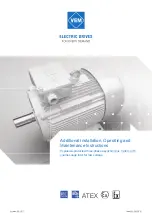
140i R2 - 150i R2 / TS Engine Manual
more infos: www.3w-modellmotoren.com
Engine Installation
The engine should be mounted on a motor box that will in turn mount to the fuselage. A quadrilateral
shape (gradually increasing in size as it goes away from the motor) provides the best circulation
of air. The reason for using a motor box rather than mounting the engine directly to the fuselage
is that the cylinder(s) need enough room around them to provide proper airflow over and away
from them
The motor box should be stiff enough to prevent engine vibration and it should also have a solid
firewall. The firewall of the motor box should be made from 1/4" aircraft plywood for engines up
to 106cc, or 3/8" aircraft plywood for engines in the 150cc class. For builders experienced with
making composite motor boxes; a comparable strength should be attained.
It is absolutely vital to ensure a tension free mounting of the engine. The surface that the engine
is mounted on must be on an even plane (i.e., a flat and level surface) so that there is no strain
on the engine itself. Again, this is a vital and critical requirement to avoid distorting the crank case,
ruining the engine, and voiding your warranty.
Mount the engine to the motor box with high tensile bolts. Once mounted you now have a sub-
assembly that you can mount to your fuselage. Spacers can be made from hardwood dowels (3/4"
to 1") or machined aluminum bar stock to adjust your down and side thrust. These spacers should
go between the motor box and fuselage and not the motor box and engine.




































